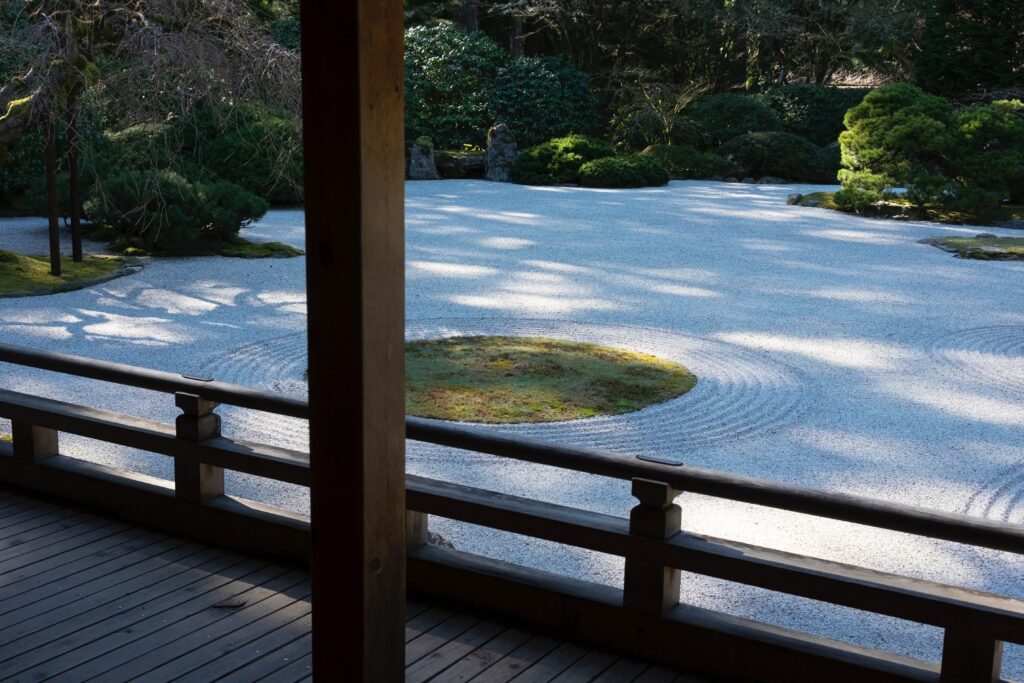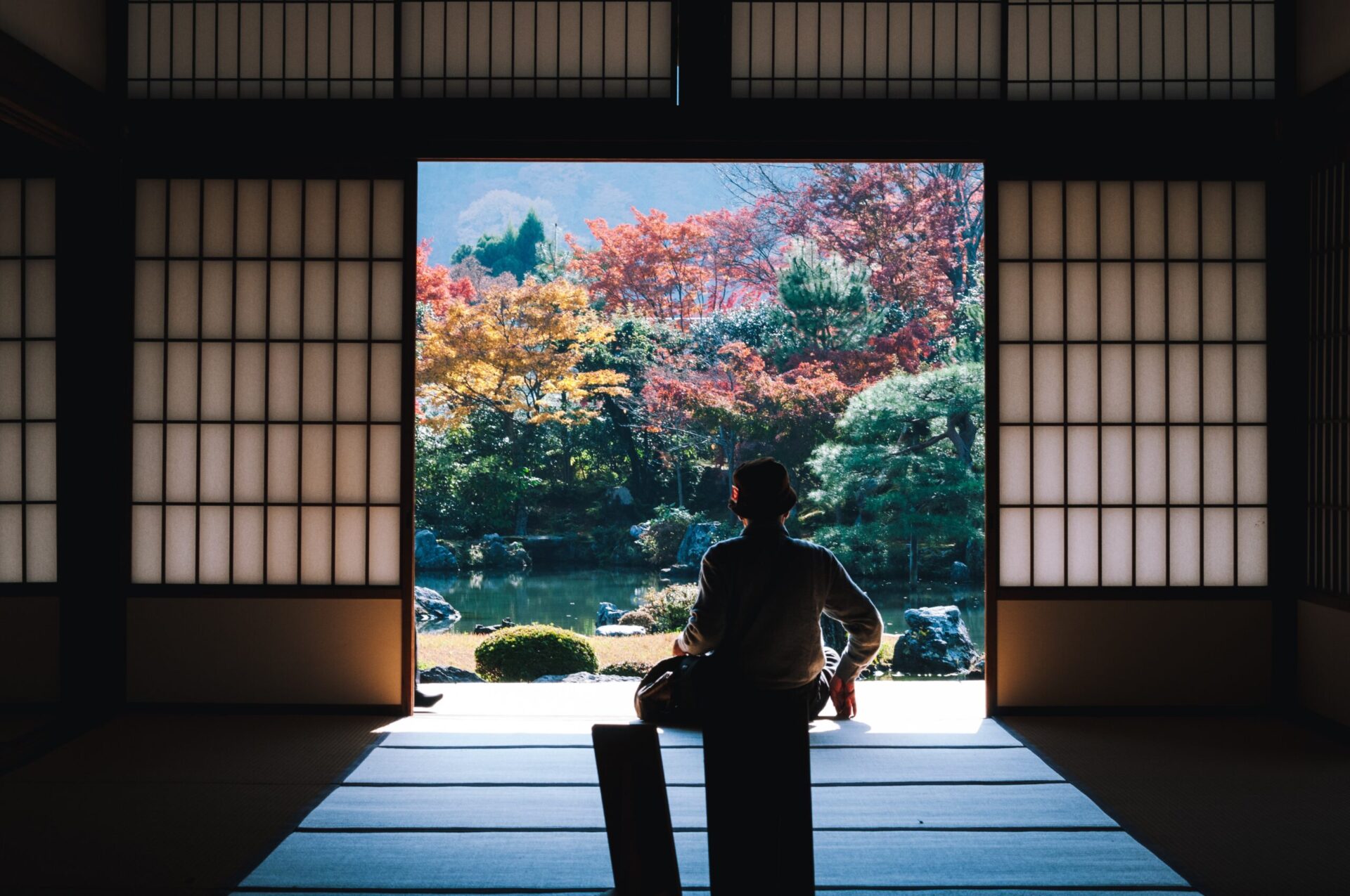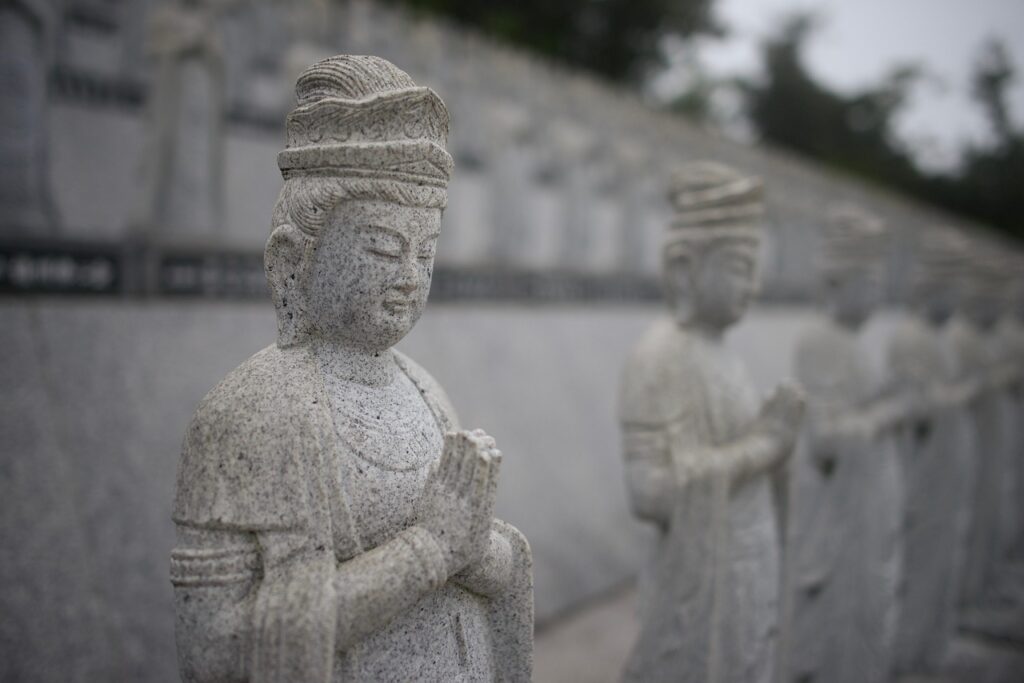In today’s fast-paced world, finding peace and tranquility can seem like an elusive quest. Yet, the ancient practice of Zen Buddhism offers timeless wisdom that can help us navigate life’s complexities with grace and calmness.
This article delves into the essence of Zen, exploring its foundational principles and how they extend beyond meditation to influence various aspects of culture, particularly in Japanese arts. We will also examine Zen’s relevance in modern life, shedding light on how its teachings can offer solace and clarity in our daily routines. Join us on this journey to discover the serene path of Zen and its profound impact on art, life, and personal growth.
Understanding Zen
Zen Buddhism, with its enigmatic practices and profound philosophies, offers a unique pathway to enlightenment through meditation, intuition, and direct experience. Unlike other spiritual traditions that often emphasize doctrinal adherence, Zen focuses on the personal and direct understanding of one’s nature and the nature of reality. This section delves into the origins, practices, and core principles of Zen, shedding light on its profound depth and transformative potential.
 Origins and Historical Development
Origins and Historical Development
Zen’s journey began in 6th century China as Chan Buddhism, weaving together elements of Mahayana Buddhism with Taoist principles. The legendary figure Bodhidharma is credited with its founding, emphasizing meditation and the direct transmission of insights beyond the scriptures. Zen later spread to Vietnam, Korea, and Japan, adapting to each culture while retaining its essence. In Japan, it deeply influenced not only spirituality but also the arts, culture, and the samurai ethos.
Core Practices of Zen
At the heart of Zen is zazen, or seated meditation, a practice where the mind is emptied of all thoughts and desires, focusing on the breath and posture with rigorous discipline. This practice is complemented by kōan study in the Rinzai school, where practitioners ponder paradoxical questions to transcend logical thinking and awaken intuition. The Sōtō school emphasizes shikantaza, or “just sitting,” a form of meditation without a specific object of concentration, fully immersing in the present moment.
Zen Principles and Philosophy
Zen Buddhism is grounded in the belief that enlightenment is inherent to all beings. This realization is not attained through intellectual understanding but through direct experience and insight. Zen teaches the importance of the here and now, advocating for a life lived fully in each moment, unencumbered by attachments or preconceived notions. The principles of Zen challenge individuals to see the world with a fresh perspective, fostering a profound appreciation for the simplicity and impermanence of life.
–Impermanence (Mujō): Recognizing the transient nature of all things is central to Zen. This awareness cultivates a deep acceptance of life’s flux, freeing individuals from the fear of loss and change.
–Non-attachment: Zen practitioners strive to live without clinging to thoughts, objects, or outcomes, fostering a state of freedom and flexibility in the face of life’s uncertainties.
–Mindfulness: Zen encourages being fully present in every action, whether sitting in meditation, drinking tea, or walking. This mindfulness leads to a deeper connection with oneself and the world.
Zen’s Universal Appeal
Zen’s minimalist approach and emphasis on direct experience over theoretical knowledge resonate widely, attracting those from various cultures and backgrounds. Its practices and principles offer a way to navigate life’s complexities with grace, fostering inner peace, clarity, and compassion. Zen’s emphasis on personal insight and transformation makes it a deeply personal yet universally applicable path.
By understanding the foundations of Zen, one begins to appreciate its profound influence on not just individual lives but also on the broader cultural tapestry, especially in the realms of art and daily living. Zen Buddhism invites all to embark on a journey of self-discovery, challenging us to question, explore, and awaken to the beauty and depth of existence.

Zen and Japanese Arts
The profound influence of Zen Buddhism on Japanese arts cannot be overstated. It has permeated various art forms, infusing them with its distinct ethos and aesthetics. Zen’s emphasis on simplicity, mindfulness, and the beauty of imperfection has shaped the development and appreciation of Japanese arts, creating expressions that transcend mere aesthetic appeal to embody deeper spiritual truths. This section explores the significant impact of Zen on Japanese arts, highlighting key areas where its influence is most evident.
Calligraphy (Shodō)
Zen calligraphy is more than mere writing; it is a spiritual practice, a meditation in motion. Each stroke of the brush carries weight, intention, and a breath of the moment, embodying the artist’s mind and spirit. Shodō reflects Zen’s spontaneity and emphasis on the present, where the brush moves with freedom and precision, capturing the artist’s fleeting state of mind. This art form teaches the importance of letting go, allowing the brush to flow without resistance, embodying the Zen principle of non-attachment.
Tea Ceremony (Chanoyu)
The Japanese tea ceremony is a choreographed ritual of serving and drinking matcha, green tea. Far beyond a simple beverage service, Chanoyu is a spiritual practice deeply rooted in Zen Buddhism. It emphasizes harmony (和), respect (敬), purity (清), and tranquility (寂), mirroring Zen’s core principles. The tea ceremony cultivates mindfulness and presence, inviting participants to engage fully with each action, each moment, reflecting the transient beauty of life itself. This ritual demonstrates the Zen concept of ichi-go ichi-e (一期一会), the idea that each meeting is unique and should be treasured.
Ink Painting (Sumi-e)
Sumi-e, or ink painting, is another art form where Zen’s influence is profound. This technique emphasizes simplicity, spontaneity, and the expressive power of negative space. Sumi-e artists strive to capture the essence of their subject with minimal strokes, reflecting the Zen pursuit of simplicity and the essential nature of objects. This art form celebrates the beauty of impermanence and the elegance of understatement, encouraging viewers to fill the empty spaces with their own perceptions and inner experiences.
Garden Design
Zen gardens are physical manifestations of Zen principles, designed to facilitate meditation and reflection. These gardens embody simplicity, naturalness, and a profound sense of balance, offering a tranquil space where one can engage in zazen or simply experience the moment. Rock gardens, with their carefully placed stones and raked gravel, simulate the essence of nature, encouraging contemplation of the larger truths of existence. Water elements, when present, symbolize purity and the flow of life, further enhancing the garden’s meditative quality.
Kintsugi
Kintsugi, the art of repairing broken pottery with gold, silver, or platinum, embodies the Zen principle of wabi-sabi, finding beauty in imperfection and acceptance of the natural cycle of growth and decay. This art form celebrates the scars and flaws of broken objects, emphasizing their unique history and beauty. Kintsugi serves as a metaphor for embracing our own imperfections and the challenges of life, highlighting resilience, transformation, and the inherent beauty of the flawed.

Central to Zen aesthetics is the concept of wabi-sabi, the appreciation of the beauty in imperfection, impermanence, and incompleteness. This principle influences all the art forms mentioned, teaching the value of simplicity, the acceptance of nature’s cycle, and the depth of understated elegance. Wabi-sabi encourages a mindful approach to life and art, finding profound beauty in the modest, the rustic, and the naturally flawed, and fostering a deep connection with the transient nature of existence.
Through these art forms, Zen Buddhism communicates its profound messages of simplicity, mindfulness, and the beauty of imperfection. Each discipline offers a path to understanding the deeper aspects of life and ourselves, reflecting Zen’s enduring influence on Japanese culture and beyond.
Zen and Modern Life
In today’s fast-paced and often superficial world, the ancient principles of Zen Buddhism offer a refreshing path to inner peace, mindfulness, and a deeper connection with the essence of life. The simplicity and profundity of Zen have transcended time and geography, finding a place in the hearts and practices of people across the globe. This section explores how Zen principles can be integrated into modern life, providing a counterbalance to the complexities and challenges of contemporary society.
Mindfulness in Daily Activities
One of the most significant contributions of Zen to modern life is the practice of mindfulness. By fully engaging with the present moment, whether in eating, walking, or communicating, individuals can cultivate a deep sense of awareness and appreciation for the richness of life. This mindfulness practice, rooted in Zen, helps reduce stress, enhance concentration, and promote a peaceful state of mind, qualities much needed in today’s world.
Minimalism and Sustainable Living
The Zen principle of simplicity has found expression in the modern minimalism movement, advocating for a life that is uncluttered by excess possessions and distractions. This approach not only brings clarity and focus but also fosters sustainable living practices. By valuing quality over quantity and finding beauty in simplicity, individuals can lead more environmentally friendly and fulfilling lives.
Embracing Imperfection
The Zen concept of wabi-sabi, finding beauty in imperfection, offers a powerful antidote to the pressures of perfectionism in modern society. By embracing our flaws and the impermanence of life, we can cultivate self-compassion and resilience, leading to a more authentic and compassionate existence. This acceptance encourages us to appreciate our own unique journey, with all its ups and downs, as inherently valuable.
Zen and Digital Detox
In an age dominated by digital devices and constant connectivity, Zen practices encourage periods of disconnection and introspection. Engaging in digital detoxes, where one intentionally refrains from using electronic devices, can help restore balance and tranquility. This practice allows individuals to reconnect with themselves, others, and the natural world, fostering deeper relationships and a sense of peace.
Integrating Zen into modern life is not about adopting exotic rituals or abandoning contemporary conveniences but about embodying its core principles—mindfulness, simplicity, and the acceptance of impermanence and imperfection. These principles offer a guiding light towards a more balanced, meaningful, and serene life amidst the chaos of the modern world. By bringing Zen into our daily routines, we open ourselves to a more conscious and connected way of living, one that embraces the beauty of the moment and the profundity of our existence.
Conclusion
Zen Buddhism, with its deep roots in mindfulness, simplicity, and the acceptance of life’s impermanent and imperfect nature, offers a timeless wisdom that transcends cultural and temporal boundaries. Its profound influence on Japanese arts has not only shaped a unique aesthetic that values the beauty in the minimal, the serene, and the flawed but has also provided a lens through which we can view our own lives with greater clarity and depth.
As we navigate the complexities and challenges of modern existence, the principles of Zen offer a sanctuary of peace and a path to a more mindful, compassionate, and fulfilled life. Integrating Zen into our daily routines and mindsets encourages us to live more intentionally, to appreciate the present moment, and to embrace our imperfections as sources of beauty and strength.
In essence, Zen teaches us to find the extraordinary within the ordinary, guiding us towards a life of harmony, both within ourselves and with the world around us.


 Origins and Historical Development
Origins and Historical Development





